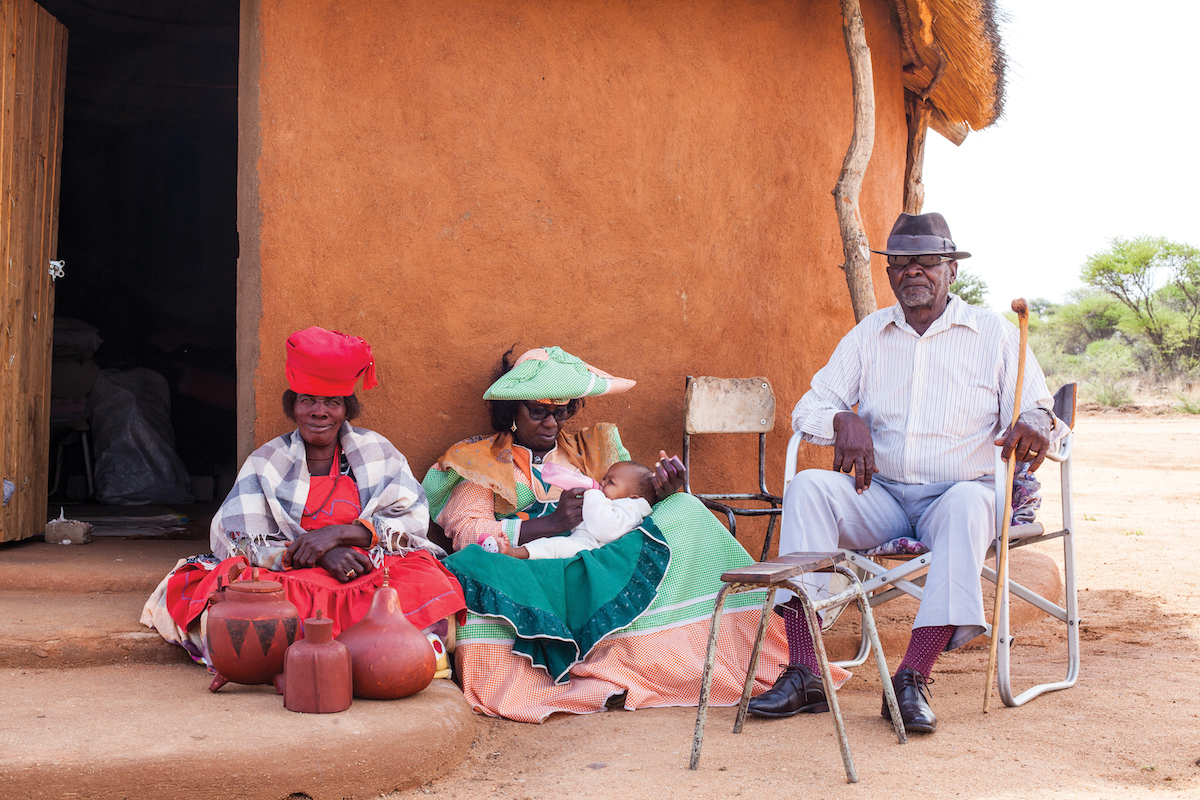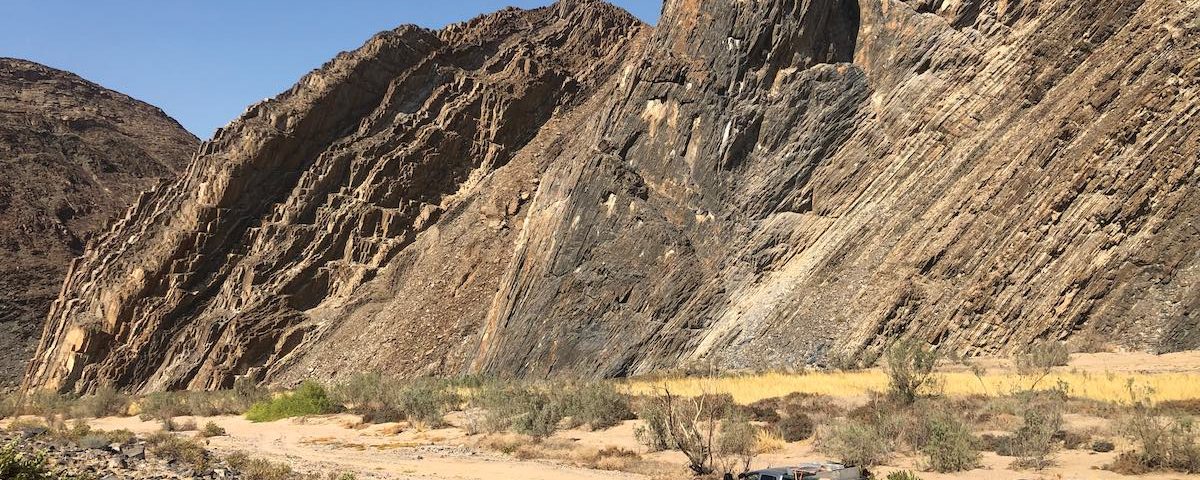
Heirloom, honey and seeds of the future
August 27, 2019
Living history at Ombu Cultural Village
August 28, 2019Here’s to the adventurous at heart. The free spirits. The wanderers and the wonderers.
Text and Photographs Elzanne McCulloch
Our daily lives can be a wonderful maelstrom of exciting moments, and yet our hearts may still yearn for new places, new faces, new moments of unique experience. A few years ago I came across the term “Generation Wanderlust”. It struck a chord. “This is me,” I thought. Fast forward half a decade, and far more than a few thousand kilometres of explorations across Namibia and the world, and the wanderlust has yet to fade. There’s always another corner of the world to explore. Another site and sight to absorb. And though the Instagram accounts and endless self-importance of my generational peers often leave me with a sour taste, the intrinsic need to discover has not disappeared.
It is this wandering heart – this curious spirit – that leads my group of friends and me to the far corners of Namibia every time our work schedules allow. At the first sign of an office-free day, the familiar ping of a busy WhatsApp group announces the start of another adventure. As if there’s a race official firing a starting gun, we’re off planning at a breakneck speed. Where will we go? Who’s coming? Who’s packing what? Two ribs for the braai or three?
A public holiday on a Thursday, quite a few applications for leave submitted for the Friday. Five bakkies packed with the essentials. A group of friends headed for another adventure.
Namibia is famous for its melange of travelling destinations, as well as the diversity of accommodation options, catering to each preference and bank account. Luxury lodges are the pinnacle of ‘what dreams are made of’ and Namibia’s assortment of spectacular establishments is akin to a seven-course gastronomic spectacle at the most exclusive of French restaurants. Swoon-worthy, yet somewhat unreachable for the hungry passerby gazing longingly through the window on his way to the corner bistro for the day’s special. Some destinations are part of the quintessential “one day when I’m grown-up” bucket-list checkbox. So for a group of young adults, barely dipping their toes into the grown-up sphere of living, with adventure-rich hearts, but not necessarily the bank accounts to back it up, camping is the ideal meal.
OF ALL THE ROADS YOU TAKE IN LIFE, MAKE SURE THAT SOME OF THEM ARE DIRT.
It is approximately two hours into the drive from Windhoek when, to the northwest of the road that leads to the coast, a strange collection of peaks disrupts the horizon. The protrusion might remind a European visitor of an ancient church spire, or a Gaudi-esque cathedral, rising from the flat desert plains. To us Namibians it is an iconic landmark that we’ve grown up with. Decembers driving to the coast from the interior were marked by a car game where the first to spot the towering peak would win (what we won is not of much consequence). The Spitzkoppe, an inselberg of rounded granite, is the first stop on our long-weekend camping adventure. An ideal waypoint when travelling from the interior to either the coast or to Damaraland in the Kunene Region – our destination for this tour. The community campsites at the Spitzkoppe are among my all-time favourites in the country, and I’ve visited most. A quick stop at the gate to pay the friendly attendant and then an exploration of the labyrinth of campsites dotted all along the base of the mountain to pick our spot for the evening.
The Spitzkoppe is Namibia’s most popular rock climbing destination. Even if braving the heights is not for you, there are various trails leading to awe-inspiring lookout points. I highly recommend scampering up the slopes in late afternoon to see the sun set, gin and tonic in hand of course, or early the next morning to see it rising over the eastern horizon. In the summer months, good rains provided, various rock pools offer a wonderfully refreshing dip. Consult the map, available at reception, for swimming spots, lookout points and ancient rock-art sites. With our fire’s flickering flames dancing on the rock encasing our campsite, we relish in the first evening of our well-deserved break.
LEAVE ONLY FOOTPRINTS BEHIND
Tourism is a very important part of Namibia’s economy and a source of livelihood for many locals, but can also be quite destructive if done wrong. Please follow these responsible tourism principles:
• Everything you take in, take back out with you. Never bury your rubbish or used toilet paper!
• Make fires only in designated fireplaces.
• Bring your own firewood. Refrain from using wood found in the surroundings for your campfire.
• Keep your impact on the environment as low as possible. That means not breaking off that branch spoiling your view.
• Stay on existing tracks and trails.
MAKE YOUR TRIP HASSLE-FREE
• Be sure your tyres are in good condition. Though Namibia’s gravel roads are mostly well-tended, it may be daunting for the inexperienced gravel road driver. Do not drive with tyres that are too hard and be sure to drive slowly, as there can be surprises like wildlife on the road or rough patches along the way.
• The most important thing to have in your car is water. At least 5 litres per person per day!
• It is a good idea to have a satellite phone with you on an adventure such as this, as many of the areas do not have cellphone reception. Satellite phones can be rented at a number of places in Windhoek, including Adventure Camping Hire and Radio Electronics.
ALWAYS TAKE THE SCENIC ROUTE
The D3716 will lead you from the Spitzkoppe to the D1930, the road to the small town of Uis. Here we stocked up on basics and filled up our tanks for the journey to follow. Both Uis Guesthouse and Brandberg Rest Camp have cold draughts on tap to quench that dry-desert-air-thirst or to have a relaxing lunch stop.
From Uis, our next destination was on the western side of Namibia’s highest mountain – the Brandberg. A beautifully scenic gravel route led us around the southern edge of the mountain. Make a few pit stops, take out your camera and capture the view, the scenery is dramatic and remarkable. The 107 km route to Save the Rhino Trust’s Ugab Camp is an adventure all in itself. We followed our trusty Tracks4Africa GPS guidance down a rough 4×4 trail, stopping now and then for the requisite photo of an interesting plant or rock. The rugged campsite is located in the Ugab River and offers communal ablutions.
“Lunch under one of the giant Ana trees, birding to our heart’s content and mesmerising geological wonders were the order of the day.”
It is operated by the non-profit organisation Save the Rhino Trust which monitors black rhinos and protects them against poaching in an area of one million hectares, from the Ugab River all the way to the Kunene River on Namibia’s northern boundary. Camping is free of charge, so consider making a donation in support of the wonderful work done by SRT.
From here the tour became slightly more adventurous. I would not recommend this part of the journey during the rainy season to anyone who does not have experience with off-road driving or to groups with less than three vehicles. Travelling eastward up the Ugab River is probably one of the most dazzling routes in the region. It is not for the faint of heart though, as the thick sandy paths can be treacherous.
TNN TRAVEL TIP:
For those not so keen on a serious off-road adventure, follow the two and a half hour route back around the southern edge of the Brandberg from the Ugab Save the Rhino Trust Camp (D2303-D2342-C35-D2359). Brandberg White Lady Lodge is easily accessible via this gravel road. You can then either explore the river area around the lodge yourself, or join one of the lodge’s desert-elephant drives to spot the specially-adapted giants
CAMPING IN THE AREA:
SPITZKOPPE CAMPSITE
Activities: Stargazing; famous rock climbing and bouldering; hiking and walking trails; birding – spot the Herero Chat
Price: N$170 pp
UGAB SAVE THE RHINO TRUST CAMP
Located in the Ugab River
Save the Rhino Trust information centre
Sometimes visited by desert-adapted elephants
GPS coordinates: -20.962604, 14.133839
Price: Free of charge. Please make a donation to SRT.
BRANDBERG WHITE LADY LODGE
At the base of the Brandberg
Desert-adapted elephants frequent the area
Birding and hiking trails
Scenic, Sunset and Desert Elephant Drives
Price: N$ 150.00 pp plus N$ 40.00 per vehicle
With the Brandberg looming over us we made our way along the 4×4 track, tell-tale signs of elephant activity visible all along the way. Lunch under one of the giant Ana trees, birding to our heart’s content and mesmerising geological wonders were the order of the day. We only got stuck once… but luckily there were enough Toyotas to help our Amarok friend out of a soft and sandy situation, and enough beers on hand that evening to make the skaamkwaad (shame pain) go away.
We met up with our giant tusked friends at Brandberg White Lady Lodge, where the promise of water lures herds of desert-adapted wildlife during the dry season. We spent the night on the banks of the Ugab River again, enjoying the beautifully appointed campsites and indulging in warm showers. Another night under the bewitching canopy of stars that is the evening sky in Namibia’s northwest. Shining so bright that the majestic silhouette of the Brandberg stood out against the navy backdrop of night.
A scrambled egg breakfast in a skillet over the coals as the Brandberg’s highest peak, Königstein, was set alight by the rising sun. What a view to wake up to. Packing up our gear, dragging our feet as we go. And so ends another adventure… As we make our way back to Windhoek via Omaruru, the volcanic Erongo Mountain range stretches out along our journey. Another mountain, calling for another time.
This article was first published in the Spring 2019 issue of Travel News Namibia.
DID YOU KNOW?
SAFETY AROUND ELEPHANTS
Populations of desert-adapted elephants can be found in Damaraland and the Kunene Region to the north. Although they are the same species as the African elephant, seen in Etosha National Park, desert elephant have longer legs, are taller and have larger feet which make them better adapted to the soft sand in their environment. These elephants have particular, more cautious feeding patterns. They rarely fell trees, break fewer branches and drink only once every 3 or 4 days, whereas an average African elephant found elsewhere normally drinks between 100-200 litres of water a day.
When you come across a desert elephant on your journey be sure to follow this advice:
- Avoid areas where they might feel trapped
- Never stop your vehicle in their path
- Drive slowly and keep your noise levels low
- Keep to existing roads and tracks
- Stay in your car when encountering a herd of elephants
- Do not camp at waterholes or near natural springs


